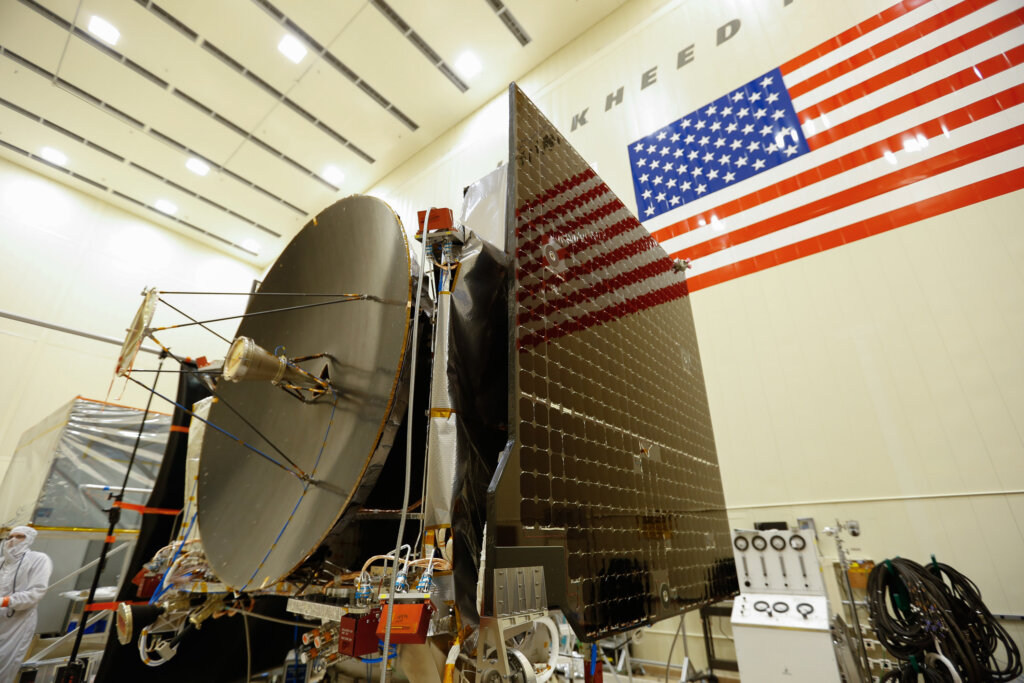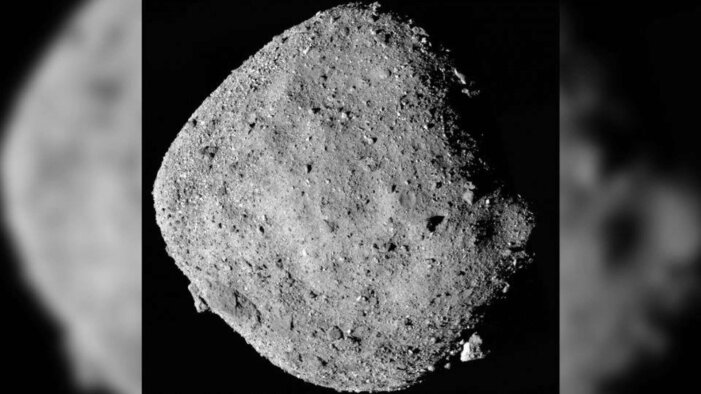September 24, 2023
An asteroid sample collected by NASA has touched down on Earth, giving scientists the opportunity to learn more about the origins of the solar system and capturing a piece of a massive space rock that has a chance of colliding with our planet in the future. It’s the first time the agency has accomplished such a feat.
Seven years after launching to space, the OSIRIS-REx spacecraft flew by Earth Sunday to deliver the pristine sample from the near-Earth asteroid Bennu.
What is OSIRIS-REx?
OSIRIS-REx, which stands for Origins, Spectral Interpretation, Resource Identification, Security, Regolith Explorer, lifted off in 2016 and began orbiting Bennu in 2018. The spacecraft collected the sample in 2020 and set off on its lengthy return trip to Earth in May 2021. The mission traveled 3.86 billion miles total to Bennu and back.
The spacecraft dropped the sample capsule — containing an estimated 8.8 ounces of asteroid rocks and soil — from a distance of 63,000 miles (102,000 kilometers) above Earth’s surface early Sunday, and entered the planet’s atmosphere at 10:42 a.m. ET while traveling at a speed of about 27,650 miles per hour (44,498 kilometers per hour).
Bennu, provisionally designated as 1999 RQ36, is a carbonaceous asteroid in the Apollo group. It was discovered by the LINEAR Project on 11 September 1999. Bennu is considered a potentially hazardous object, with the highest cumulative rating on the Palermo Technical Impact Hazard Scale. It has a 1-in-1,750 chance of impacting Earth between 2178 and 2290, with the most significant risk on 24 September 2182. The asteroid is named after Bennu, an ancient Egyptian mythological bird associated with the Sun, creation, and rebirth.
Bennu has a mean diameter of 490 meters and has been extensively observed by radar systems at the Arecibo Observatory and the Goldstone Deep Space Network. The OSIRIS-REx mission targeted Bennu, returning its samples to Earth on 24 September 2023. Before this, the OSIRIS-REx spacecraft arrived at Bennu in December 2018, mapping its surface in detail and collecting a sample in October 2020. The sample return capsule separated from the spacecraft and landed on Earth on 24 September 2023.
Bennu’s surface features are named after various bird species and bird-like figures in mythology. The asteroid’s regolith-covered surface was imaged by OSIRIS-REx, revealing a rough terrain with boulders and other geological features. The asteroid’s origin traces back to the breakup of a much larger parent body, with its minerals and atoms originating from dying stars like red giants and supernovae.

Thought-Provoking Questions and Insights:
1. Potential Impact on Earth: With Bennu having a 1-in-1,750 chance of impacting Earth in the future, what measures are being taken to monitor and potentially divert such asteroids?
2. OSIRIS-REx Mission’s Significance: How will the samples collected from Bennu by the OSIRIS-REx mission contribute to our understanding of the solar system’s origins and the nature of asteroids?
3. Bennu’s Mythological Connection: The naming of Bennu after an ancient Egyptian mythological bird emphasizes the human tendency to connect celestial bodies with mythology. How do such naming conventions influence our perception and understanding of space exploration?


